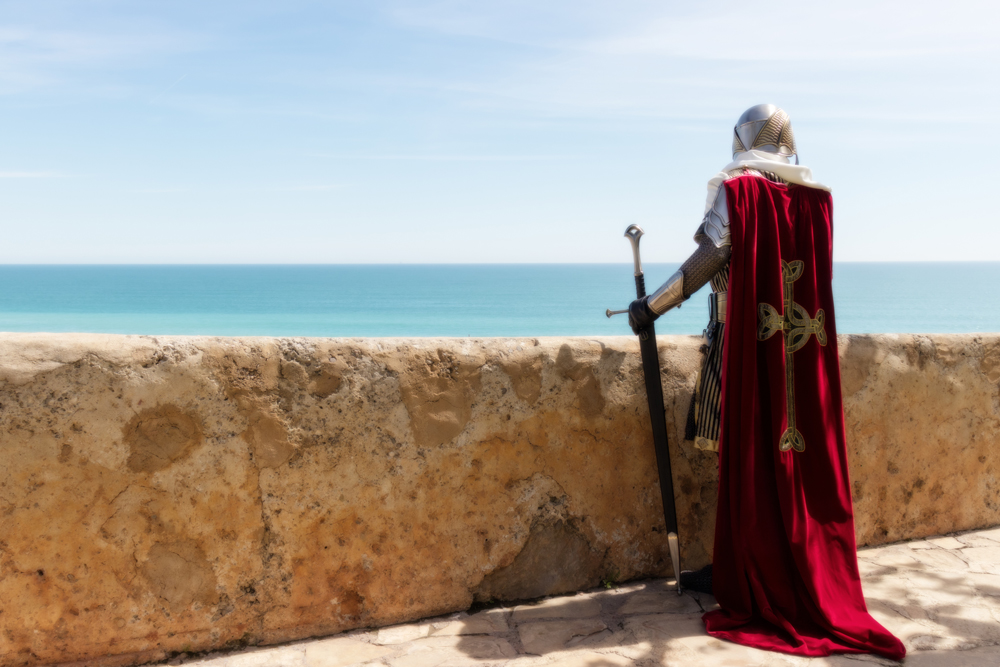When we think of the Middle Ages, two images often come to mind: the noble knight and the towering château. These symbols of medieval Europe represent not only a romanticized past but also the complex social, military, and architectural advancements of the time. Let’s explore the fascinating connection between knights and châteaux, their historical significance, and how their legacy endures in the modern world.
The Role of Knights in Medieval Society
Knights were more than just warriors clad in shining armor; they were the embodiment of chivalry, honor, and loyalty. In a feudal society, knights served as protectors of the realm and vassals to their lords. Their primary duty was to defend the lands and interests of their liege, often through military service, but their role extended beyond the battlefield.
Knighthood was also a social class, deeply rooted in aristocratic traditions. Young boys from noble families were trained from an early age to become knights, first serving as pages and then as squires, before eventually being dubbed knights in a formal ceremony. This path to knighthood was not just about learning combat skills but also about mastering the ideals of courtly conduct, loyalty, and religious devotion.
Châteaux: Fortresses of Power and Prestige
The château, or castle, was the centerpiece of medieval life, functioning as both a fortress and a symbol of power. Unlike the picturesque palaces we might imagine today, early châteaux were heavily fortified structures designed for defense. Their strategic placement on hilltops or near water sources made them difficult to besiege, and their thick walls and narrow windows (often referred to as arrow slits) were built to repel invaders.
Beyond their military purpose, châteaux served as the administrative centers of the feudal estate. Here, the lord would manage the lands, settle disputes, and oversee agricultural production. These grand structures were also the homes of knights, nobility, and sometimes royalty, further emphasizing the close link between martial prowess and governance in medieval times.
Châteaux evolved over the centuries, from simple motte-and-bailey designs—where a wooden or stone keep sat atop a raised earth mound, surrounded by a protective enclosure—to more elaborate, multi-towered stone fortresses. Some even transitioned into luxurious residences during the later medieval and Renaissance periods as warfare tactics changed, reflecting the growing stability in certain regions of Europe.
The Symbiotic Relationship Between Knights and Châteaux
Knights and châteaux were inherently linked, each serving the other in the larger framework of medieval society. Knights, as the military elite, required a stronghold from which to operate, and châteaux offered both protection and status. On the other hand, châteaux needed the defense that only well-trained knights could provide, especially during times of invasion or rebellion.
Châteaux were often the base of operations for knights when not on campaign. Many noble families, particularly those of knightly rank, lived in these castles, where they trained for war and governed their territories. This interdependence created a system where military prowess and landownership became deeply intertwined, solidifying the social order of feudalism.
Chivalry and Courtly Life
The château was also the backdrop for the development of chivalric culture. While knights are often remembered for their martial abilities, they were equally celebrated for their adherence to the chivalric code, a set of ideals promoting bravery, loyalty, and courtesy. In this context, the château became not just a place of war but a center of culture, where knights could demonstrate their refinement through tournaments, feasts, and courtly love.
Courtly love, in particular, was a romantic ideal often associated with knights and their devotion to noblewomen. Though usually more symbolic than practical, this aspect of chivalric life was closely tied to the codes of honor and behavior that knights were expected to uphold. Many châteaux hosted lavish tournaments and jousts, where knights competed for the favor of their lady and the approval of their peers.
The Evolution and Endurance of Knightly and Château Culture
As Europe transitioned from the medieval period into the Renaissance and beyond, both the knightly class and châteaux underwent significant transformations. The rise of professional standing armies in the late Middle Ages reduced the military importance of knights, and many noble families shifted from châteaux to more comfortable, Renaissance-style palaces.
However, the cultural legacy of knights and châteaux remains strong. Today, the iconic image of a knight in shining armor and a majestic castle on a hill continues to captivate our imaginations. Châteaux across Europe have been preserved as historical monuments, with many turned into museums, luxury hotels, or even private homes. These structures, like Château de Chambord in France or Windsor Castle in England, are reminders of the grandeur and power of a bygone era.
Knighthood also persists in various ceremonial forms. Many modern orders of knighthood, such as the Order of the Garter in the United Kingdom or the Knights of Malta, still exist, honoring individuals for their service or contributions to society. While today’s knights no longer charge into battle on horseback, the values of honor, loyalty, and service that defined medieval knighthood continue to resonate.
Conclusion
Knights and châteaux were two pillars of medieval life, reflecting the intertwined roles of military service, governance, and social order. Together, they shaped the history and landscape of Europe, leaving behind a legacy that continues to inspire. Whether through the enduring ideals of chivalry or the breathtaking beauty of medieval castles, the stories of knights and châteaux still echo through the corridors of history, offering us a glimpse into a world where honor and strength defined an age.
